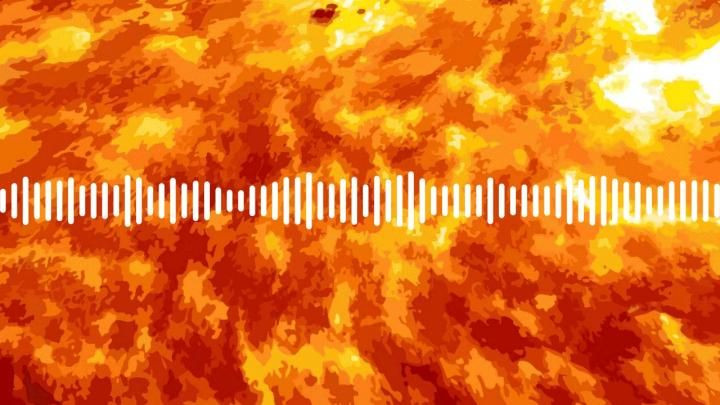Sounds Of The Sun: Listen To The Eruption-Revealing Hum Of Our Star

NASA has released a series of sound clips revealing what the motion of our Sun actually sounds like.
For years, scientists have been studying the dynamics of the Solar System, an effort aimed at observing different objects sitting in our neighborhood including its only star — the Sun.
The work, conducted with different space missions, has given us a lot to learn, but despite hosting some of the finest ground and space-based telescopes, we still have no definite way to peer deep inside the corona or the atmosphere of the Sun.
In order to fully understand the dynamics of our star, it is very essential to know what’s happening within it. The lack of tools limits our capacity in this area, but, the data collected by NASA’s Solar and Heliospheric Observatory (SOHO) and the European Space Agency (ESA) has given us a way to hear the vibrations of the star and predict what’s going on there.
Scientists have long known that any material movement, be it on Earth or beyond, generates an accompanying wave. The rule also applies to the Sun and movement occurring on its surface produces waves.
“Waves are traveling and bouncing around inside the Sun, and if your eyes were sensitive enough they could actually see this,” Alex Young, associate director for science in the Heliophysics Science Division at NASA’s Goddard Space Flight Center, said in a statement.
The data related to these waves has been captured by SOHO and ESA for over 20 years and scientists at Stanford Experimental Physics Lab have converted that information into sounds. For instance, in this audio, we can hear the vibrations of our star.
These jiggles, as Young described, are helping scientists get an idea of what’s happening inside our Sun. Essentially, the vibrations occur at a different frequency and those frequencies can be used to look inside the sun and study a range of processes, starting from solar flares to coronal mass ejections (CME).
“We don’t have straightforward ways to look inside the Sun. We don’t have a microscope to zoom inside the Sun,” Young added. “So using a star or the Sun’s vibrations allows us to see inside of it.”
The method has helped scientists observe flowing solar material and understand the Sun like never before. The complex movement that occurs inside produces magnetic fields that move up to the surface and create sunspots, which then produce solar flares and CMEs.
“That simple sound is giving us a probe inside of a star. I think that’s a pretty cool thing,” Young said. Additional multimedia related to the sounds of the Sun is available on NASA's SoundCloud channel and is up for display at the agency's Goddard Visitor Center.
© Copyright IBTimes 2025. All rights reserved.





















